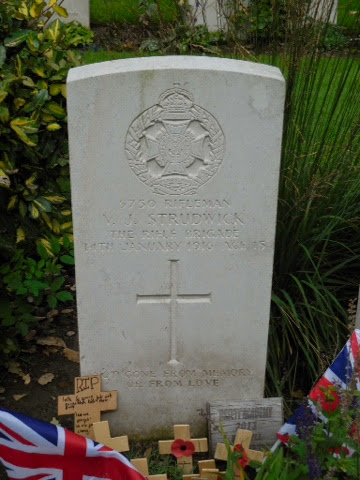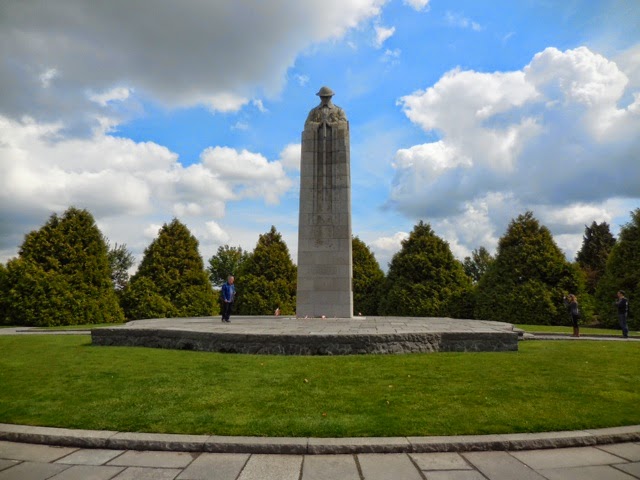Our first stop was to one of the 4 German cemeteries dedicated to fallen soldiers. It has a significant sculpture that was carved by the mother of a fallen soldier. Titled, "The Greiving Parents", says it all.
His remains lay here.
Next, a short drive through some beautiful countryside, we came to what became known as the "Trench of Death". This is the original trench line, although sandbags have been replaced by cement. The old bunkers remain.
Our next stop was to Essex Farm Memorial. This was the location where Canadian Surgeon, John McRae, penned the poem "In Flanders Field". He was working in the Advanced Dressing Station, trying to save some lives.

The working conditions were pretty ordinary. A wonder anyone survived their injuries.
One of the youngest soldiers to die is buried here. 15yo.
In this area. The first chemical warfare was used in this war. Chlorine gas had a devastating effect on anything in its wake. People, animals, tress and plants all devastated. It took several years after the war for the ground to become fertile again and produce decent crops.
The Canadians took quite a hit here and "The Brooding Soldier" is there as a memorial.
As we drive through the country, our guide tells us how the war still affects people today. Unexploded munitions of all shapes and sizes are regularly found 100 years on. Farmers whose fields have been paddocks, then ploughed up, need to be cautious. 2 construction workers were killed last year when their digging detonated an unexploded shell.
On to Tyne Cot Memorial. This is the largest Commonwealth Memorial. It also situated on the Paschendale Ridge, a stronghold of the Germans for much of the war. Over 12,000 soldiers are buried here, over 2/3rds unknown soldiers. Whilst soldiers were buried shortly after their death, so many graves were destroyed by constant shelling over the 4 years.
These photos say it all.
A VC winner below. Would have been many more VC's awarded, but not many had a living witness to verify the act of bravery!
A very moving sight.



We journeyed on to Ypres. This city was wiped out by the battles, like so many of the surrounding fields and towns. However, this place was restored to its former self by the locals. You wouldn't believe that there was nothing left here 100 years ago. The building below was the town hall, but now a very detailed museum to the Ypres Salient.

This city was a fortress in its early days and was protected by the Menin gate. After it's destruction, it was rebuilt to remember over 54,000 Commonwealth soldiers who died in the Ypres Salient over 4 years, who have no known grave. Their names and regiments are engraved inside the Gate. Since it's inauguration in 1927, there has been a ceremony at 8pm there every night. (With an interruption during WW2).
We were there with about 2,000 others tonight to remember.




















No comments:
Post a Comment